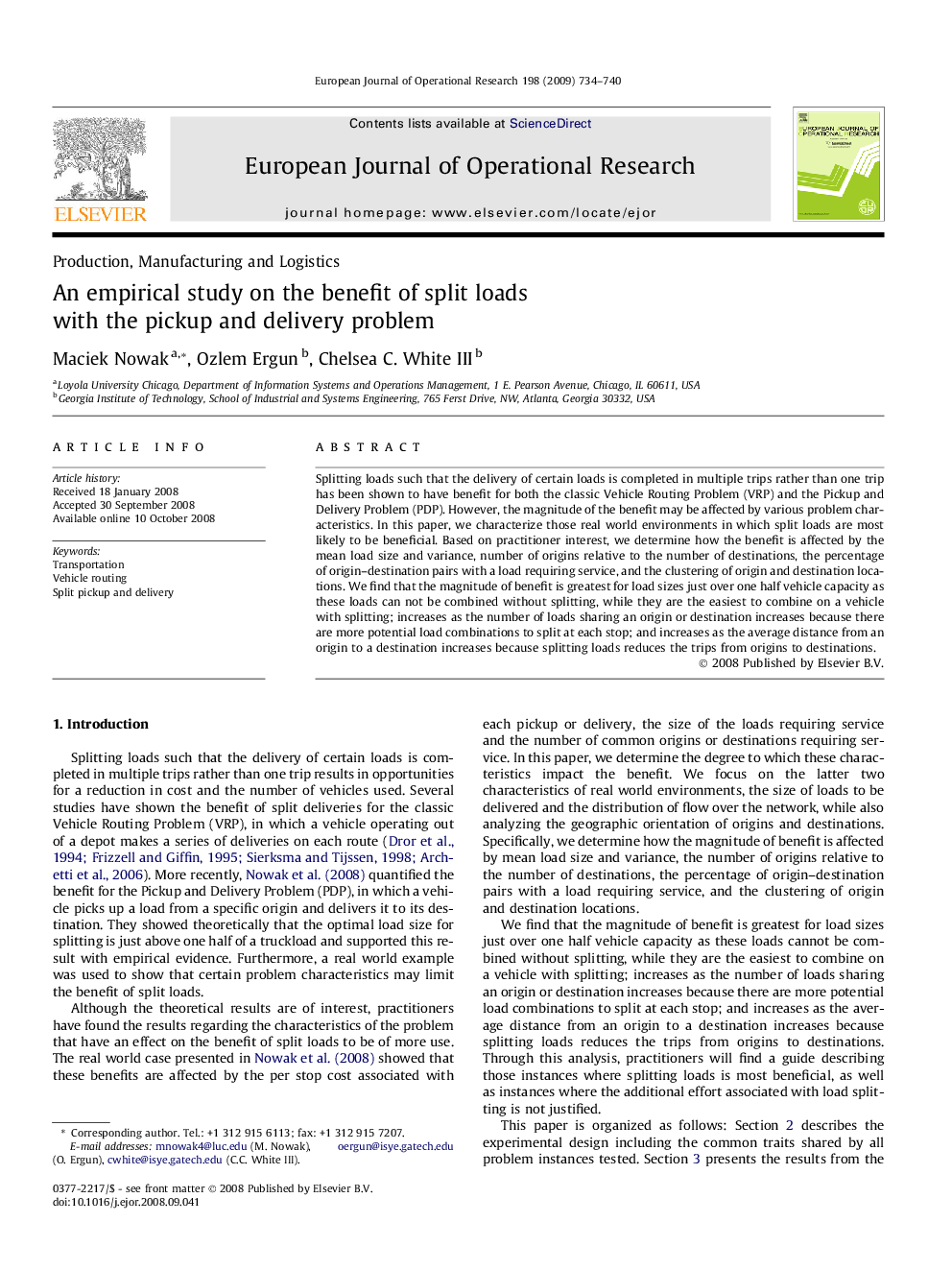| Article ID | Journal | Published Year | Pages | File Type |
|---|---|---|---|---|
| 481423 | European Journal of Operational Research | 2009 | 7 Pages |
Splitting loads such that the delivery of certain loads is completed in multiple trips rather than one trip has been shown to have benefit for both the classic Vehicle Routing Problem (VRP) and the Pickup and Delivery Problem (PDP). However, the magnitude of the benefit may be affected by various problem characteristics. In this paper, we characterize those real world environments in which split loads are most likely to be beneficial. Based on practitioner interest, we determine how the benefit is affected by the mean load size and variance, number of origins relative to the number of destinations, the percentage of origin–destination pairs with a load requiring service, and the clustering of origin and destination locations. We find that the magnitude of benefit is greatest for load sizes just over one half vehicle capacity as these loads can not be combined without splitting, while they are the easiest to combine on a vehicle with splitting; increases as the number of loads sharing an origin or destination increases because there are more potential load combinations to split at each stop; and increases as the average distance from an origin to a destination increases because splitting loads reduces the trips from origins to destinations.
